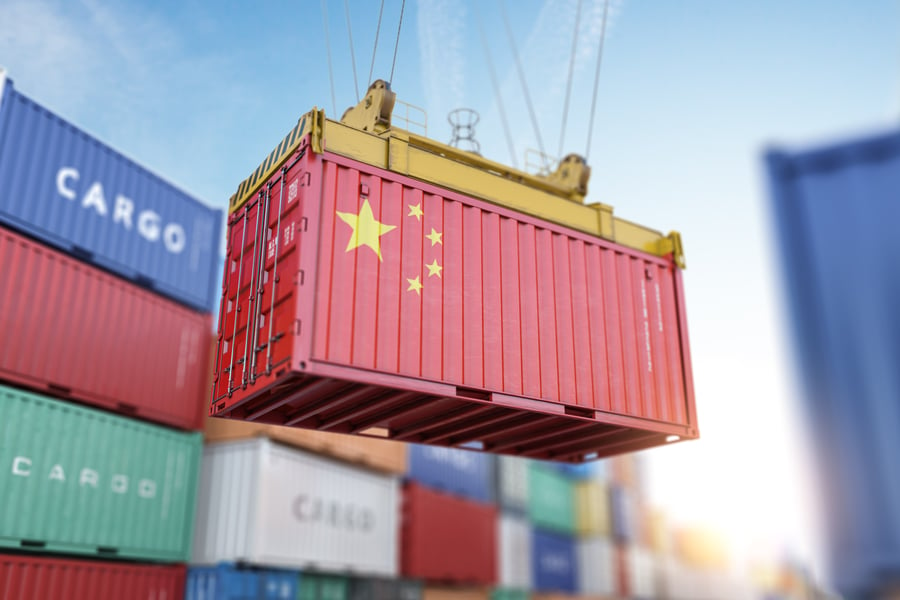With over 15 years of experience in finance, risk management and data analytics, Bill understands exactly what enterprise businesses should be thinking about as they build their corporate growth and risk strategies. Prior to joining Creditsafe in 2021, he spent six years at Dun & Bradstreet as Area Vice President of Finance Solutions and Third-Party Risk & Compliance.
Inventory management is a key pillar of success for a manufacturing business of any size.
This is the process of organizing, sourcing, processing and selling raw materials and finished products.
Whether it’s knowing when to restock or how much to pay for materials, a strong inventory management system provides a range of advantages. This includes:
- Higher productivity: Keep track of all the stock you have, save time on manual checks, have a streamlined warehouse and optimize fulfillment.
- Cost savings: With an accurate record of stock, you won’t buy more than you need. Having access to data like transportation fees, storage handling and insurance also means you can avoid costly mistakes.
- More profit: Understanding how many goods you have to sell and the demand for them means higher inventory turnover. This leads to greater profits.
The last two benefits are worth emphasizing because of how inventory management impacts your cash flow. What you don’t want to be doing is holding excess stock, giving customers a bad sales experience or yielding low-profit margins based on what you have in your inventory. In these scenarios, your cash flow will take a hit.
Unfortunately, it’s not always easy to plan for these inventory setbacks, as lots of U.S. manufacturing businesses are struggling in uncertainty. A looming recession, supply chain disruption and labor shortages are all adding pressure to the sector.
So, let’s explore what makes inventory management unique in the manufacturing sector. By understanding this, you should be able to put in the right inventory management systems and tools to keep your inventory turnover high and your cash flowing.
You need more precision with inventory control
Inventory control in manufacturing is different from the way most other sectors operate. How? Well, generally most industries don’t have to be 100% accurate with inventory control on every item they stock because they use the 80/20 rule - with 80% of profits coming from 20% of their inventory. In most cases, they can use this rule to figure out which products are the most profitable and adjust as necessary.
We know it’s different for you. You’re working with a huge amount of raw materials with only a small fraction being profitable once they’re part of finished goods that will be sold. So, there needs to be a greater level of precision in handling multiple inventories and protecting against the threat of work stoppages or stockouts. That’s why it pays to use the right kind of inventory management method.

Just-In-Time (JIT) processing
JIT processing involves a company receiving goods as close as possible to when they’re needed. There are some key benefits to this approach. For instance, you can save on inventory storage space, improve cash flow and reduce the amount of capital needed for your business.
But it also comes with risks. Imagine you’re a gaming equipment manufacturer and there’s a sudden spike in demand for a console or device during the holiday shopping season. But you can’t source it in time. That leads to a production bottleneck, which could mean that you aren’t able to fulfil your customer orders.
Apple is a great example of using the JIT model for success. CEO Tim Cook revamped the company’s manufacturing process. He explained his rationale for doing so, saying: “Inventory is like dairy products. No one wants to buy spoiled milk.”
He shut down Apple warehouses and established just-in-time relationships with manufacturers in China. Cook knew labor and goods costs were cheaper than in the US and his model led to Apple being able to turn over inventory once every five days. This led to the manufacturing and shipping of millions of products worldwide.
Harley-Davidson also leveraged JIT management to cut inventory levels by 75% and increase productivity. The motorcycle titan even went a step further by creating material velocity centers to improve logistics, centralize manufacturing processes and streamline its supply chain.
Material Requirements Planning (MRP)
Another method to consider is MRP inventory management, which offers plenty of precision. This system calculates the exact components needed to make a product in three steps:
- Taking inventory of materials
- Identifying what else is needed
- Scheduling production and purchase at the most cost-effective price
With this method, you can improve product quality, respond faster to customer demands and avoid stockouts so you remain financially healthy. However, the precision of an MRP system is a double-edged sword because it’s dependent on accurate information about inventory and production. If even a couple of inputs are wrong, this could snowball into more errors later on and lead to production delays.
Inventory lists
Something else to consider is inventory lists. Think of them as an essential add-on to your chosen management system. An inventory list is a complete guide to every item you have in stock and should feature details like name, SKU number, cost and quantity.
By having a list, you know which stock is ready to sell so you aren’t missing out on potential profit. You know exactly what your inventory turnover ratio is, revealing how efficient your business is and where gaps need to be filled.
Given the economic downturn, Ukrainian/Russian war, earthquakes in Turkey and Spain, rising tensions between the US and China over trade disputes, it’s little wonder logistics leaders aren’t confident about their supply chains. Half of logistics managers don’t expect things to return to normal until 2024. A further 29% believe it won’t happen until after 2025.
No doubt this litany of disruptions has impacted your inventory management and ability to source raw materials. Maybe you’ve run out of an essential item or have had to pay a premium on a bulk order to meet a deadline.

But there are always workarounds. Some include:
- Auditing your current inventory: This will help you build an emergency stockpile of components, finished goods and materials to see you through uncertainty.
- Diversifying your product sourcing locations and opening more routes with nearshoring: For U.S. manufacturers, Mexico is an ideal location because of strong tariff stability and the opportunity to save on offshore production costs.
- Investing in the right digital tools to get better visibility of your inventory at all points of the supply chain: An example is digital freight matching, which is like the Uber of trucking and connects shippers and carriers together for faster delivery. Another option is blockchain. It creates an audit trail of transactions, can be used for tracking the provenance of goods and provide more transparency in the supply chain.
Managing supplier relationships
Further complexity comes into how you maintain your supplier relationships. And certain suppliers aren’t always replaceable. All it takes is one of the setbacks we’ve mentioned and you could be stuck waiting months for the supplies you’ve ordered. In this situation, there’s nowhere else to go because the supplier is the only one that can give you those specific parts.
But with diligent inventory management, you can avoid this situation and plan ahead so your cash flow isn’t affected by delays. There are two things you can do here. First, you can improve your relationship with existing suppliers. A few ways to do this include:
- Always have open communication channels for better transparency. This will help you avoid misinterpretations and help to deal with challenges, such as missing purchase orders or wrong inventory counts.
- Be flexible with your suppliers up to a certain point. Remember that you probably aren’t their only customer and they’re dealing with lots of other manufacturers who might be facing similar problems.
- Be diplomatic with sharing blame. It’s important to look at a situation objectively so you can come up with a way to resolve the issue fairly and efficiently.
- If you’re working with an overseas supplier, be mindful of the cultural differences. For example, if you’re working with a Chinese supplier, understand the importance of guanxi (the system of personal trust in business) and make sure to honor it.
- Be ethical in all your business dealings and do your best to pay suppliers on time.

The second thing you can do is create a network of backup suppliers so that you’re not left with a production bottleneck if one or more of your suppliers’ factories shut down. When selecting international suppliers, you should pay attention to certain things.
Make sure:
- The supplier has a strong track record of producing high quality goods and delivering orders on time at a reasonable price.
- The supplier’s production quality meets your desired quality standards. Get a sample order first to verify this, if possible.
- The supplier is flexible and willing to take your sourcing requirements into account.
- The supplier is in good financial health, poses a low credit risk, has a strong credit score and excellent track record of paying invoices on time. Make sure you’re looking at the right data in a supplier’s business credit report.
- The supplier is adaptable and has the capacity to take over quickly if a primary supplier can’t fulfil your orders.
- The supplier is transparent about their policies and are open to having their factory and processes audited. Make sure they are equally invested in protecting the integrity of your supply chain.

About the Author
Bill James